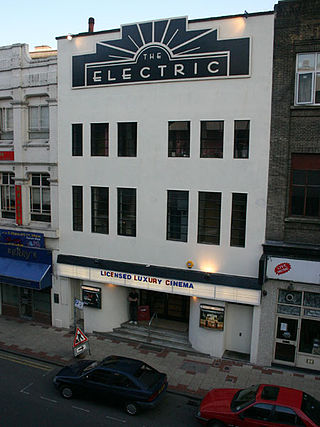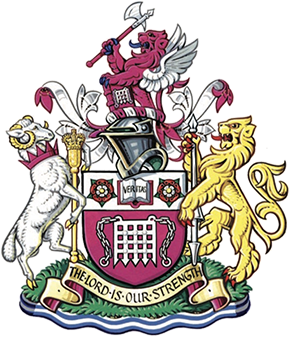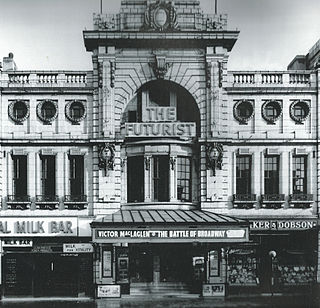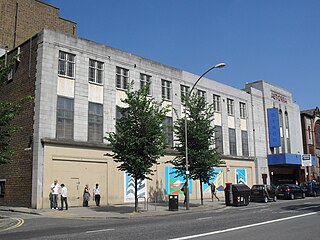
London is the capital and largest city of England and the United Kingdom, with a population of around 8.8 million. It stands on the River Thames in south-east England at the head of a 50-mile (80 km) estuary down to the North Sea and has been a major settlement for nearly two millennia. The City of London, its ancient core and financial centre, was founded by the Romans as Londinium and retains its medieval boundaries. The City of Westminster, to the west of the City of London, has for centuries hosted the national government and parliament. Since the 19th century, the name "London" also refers to the metropolis around this core, historically split among the counties of Middlesex, Essex, Surrey, Kent, and Hertfordshire, which since 1965 has largely comprised Greater London, which is governed by 33 local authorities and the Greater London Authority.

The City of Westminster is a city and borough in London. It is the site of the United Kingdom's Houses of Parliament and much of the British government. It occupies a large area of central London, including most of the West End. Many London landmarks are within the borough, including Buckingham Palace, Westminster Abbey, Whitehall, Westminster Cathedral, 10 Downing Street, and Trafalgar Square.

Leicester Square is a pedestrianised square in the West End of London, England. It was laid out in 1670 as Leicester Fields, which was named after the recently built Leicester House, itself named after Robert Sidney, 2nd Earl of Leicester. The square was originally a gentrified residential area, with tenants including Frederick, Prince of Wales and the artists William Hogarth and Joshua Reynolds. It became more down-market in the late 18th century as Leicester House was demolished and retail developments took place, becoming a centre for entertainment. Major theatres were built in the 19th century, which were converted to cinemas towards the middle of the next. Leicester Square is the location of nationally significant cinemas such as the Odeon Luxe Leicester Square and Empire, Leicester Square, which are often used for film premieres. The nearby Prince Charles Cinema is known for its screenings of cult films and marathon film runs. The square remains a tourist attraction which hosts events, including for the Chinese New Year.

The National Science and Media Museum, located in Bradford, West Yorkshire, is part of the national Science Museum Group in the UK. The museum has seven floors of galleries with permanent exhibitions focusing on photography, television, animation, videogaming, the Internet and the scientific principles behind light and colour. It also hosts temporary exhibitions and maintains a collection of 3.5 million pieces in its research facility.

Piccadilly Circus is a road junction and public space of London's West End in the City of Westminster. It was built in 1819 to connect Regent Street with Piccadilly. In this context, a circus, from the Latin word meaning "circle", is a round open space at a street junction.

Regent Street is a major shopping street in the West End of London. It is named after George, the Prince Regent and was laid out under the direction of the architect John Nash and James Burton. It runs from Waterloo Place in St James's at the southern end, through Piccadilly Circus and Oxford Circus, to All Souls Church. From there Langham Place and Portland Place continue the route to Regent's Park.

Oxford Street is a major road in the City of Westminster in the West End of London, running from Tottenham Court Road to Marble Arch via Oxford Circus. It is Europe's busiest shopping street, with around half a million daily visitors, and as of 2012 had approximately 300 shops. It is designated as part of the A40, a major road between London and Fishguard, though it is not signed as such, and traffic is regularly restricted to buses and taxis.
The Odeon Luxe Leicester Square is a prominent cinema building in the West End of London. Built in the Art Deco style and completed in 1937, the building has been continually altered in response to developments in cinema technology, and was the first Dolby Cinema in the United Kingdom.

The Odeon Luxe West End is a two-screen cinema on the south side of Leicester Square, London. It has historically been used for smaller film premieres and hosting the annual BFI London Film Festival. The site is on an adjacent side of the square to the much larger flagship Odeon Luxe Leicester Square.

The Electric is a cinema in Birmingham, England. It opened in Station Street in 1909, showing its first silent film on 27 December of that year. It was the first cinema in Birmingham, and as of 2022 is the oldest known working cinema in the country. The Electric has two screens, both able to show digitally-shot films and one also able to show films in 35 mm.

Cineworld Group plc is a British cinema operator headquartered in London, England. It is the world's second-largest cinema chain, with 9,139 screens across 747 sites in 10 countries: Bulgaria, Czech Republic, Hungary, Ireland, Israel, Poland, Romania, Slovakia, the United Kingdom and the United States. The group's primary brands are Cineworld and Picturehouse in the United Kingdom and Ireland, Cinema City in Eastern and Central Europe, Planet in Israel, and Regal Cinemas in the United States.

Rundle Mall is a pedestrian street mall located in Adelaide, South Australia. It was opened as a pedestrian mall in September 1976 by closing the section of Rundle Street between King William Street and Pulteney Street, to vehicular traffic. The street continues as Rundle Street to the east and Hindley Street to the west.
Odeon, stylised as ODEON, is a cinema brand name operating in the United Kingdom, Ireland and Norway, which along with UCI Cinemas and Nordic Cinema Group is part of the Odeon Cinemas Group subsidiary of AMC Theatres. It uses the famous name of the Odeon cinema circuit first introduced in Great Britain in 1930. As of 2016, Odeon is the largest cinema chain in the United Kingdom by market share.

The Seattle Cinerama Theatre is a landmark movie theater in the Belltown neighborhood of Seattle, Washington, United States. The theater opened in 1963 and was renovated in the 1990s after its acquisition by Paul Allen. The Cinerama was closed in May 2020 and sold in 2023 to the Seattle International Film Festival. At the time of its 2020 closure, it was one of only three movie theaters in the world capable of showing three-panel Cinerama films.

The University of Westminster is a public university based in London, United Kingdom. Founded in 1838 as the Royal Polytechnic Institution, it was the first polytechnic to open in London. The Polytechnic formally received a Royal charter in August 1839, and became the University of Westminster in 1992.

The Hyde Park Picture House is a cinema and Grade II listed building in the Hyde Park area of Leeds, West Yorkshire, England. Built by Thomas Winn & Sons, it opened on 7 November 1914. It features many original features, such as an ornate balcony and external box office, and is believed to be the only remaining gaslit cinema in the world. Following the installation of "comfier seating", the Picture House has a capacity of 275, down from around 587 on opening.

Everyman Theatre is a theatre based in Regent Street, Cheltenham. There are two auditoria in the building - the 675 seat main auditorium and the 60 seat Studio Theatre, originally named The Ralph Richardson Studio after Ralph Richardson.

The Futurist Cinema was a cinema located in Lime Street, Liverpool. Opened as Lime Street Picture House in 1912, the cinema operated until closing in 1982. Unable to find a new owner it was left to decline. It was demolished in 2016 after a court battle over the controversial plans for redevelopment of the area.

The Astoria Theatre was a former cinema in Brighton, part of the English coastal city of Brighton and Hove. Built in 1933 in the Art Deco style for a local entertainment magnate who opened one of Brighton's first cinemas many years earlier, it was the first and most important expansion of the Astoria brand outside London. It initially struggled against the town's other "super-cinemas", but enjoyed a period of success in the 1950s and 1960s before rapid decline set in, culminating in its closure in 1977.
La vie commence demain is a 1950 French film directed by Nicole Védrès. It was the first X-rated film shown in the United Kingdom. It was screened at the Regent Street Cinema in London in 1951.


















